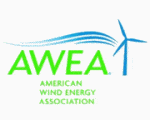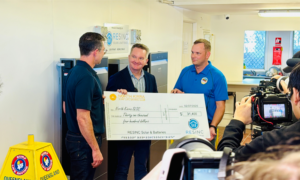America’s wind power market continues to boom on the back of government renewable energy incentives, but the industry’s peak body says Congress must provide assurance it will continue to support tax breaks for private investors.
According the American Wind Energy Association’s (AWEA) U.S. Wind Industry Second Quarter 2014 Market Report, 15 wind energy projects have been completed and gone online since the start of the year, adding 217 MW in the first quarter and 619 MW in the second quarter.
Since January, a total of 14,600 MW of new wind power projects have entered construction phase, with brand name companies like Google, Mars and IKEA announcing they would take advantage of the federal government’s Production Tax Credit scheme and invest in wind energy systems.
“Today’s great values on clean, low-cost wind power are encouraging utilities and major companies to sign more and more contracts for it,” said Tom Kiernan, CEO of the American Wind Energy Association (AWEA). “They show how successful the renewable energy tax credits have been in getting the private investment needed to build these new projects.”
The Production Tax Credit (PTC) is a 2.3 cent-per-kilowatt-hour renewable energy subsidy provided for electricity generated by wind, geothermal and closed-loop biomass systems. Developers of renewable energy plants could also choose the federal business energy investment credit (ITC) in the form of a cash grant.
In January 2013, Congress changed the eligibility rules for the PTC. To receive the tax break, a wind farm development must have begun construction, or invested five per cent of its capital by the end of 2013 to qualify for the PTC once the project starts generating energy for the grid.
These changes have caused uncertainty among investors, said Emily Williams, AWEA’s Manager of Industry Data and Analysis, and led to delays in construction of projects.
“In addition to negotiating Power Purchase Agreements, developers have had to place orders for long-lead-time items like wind turbines and step-up transformers, secure construction services, and secure financing. All this had to start fresh from the PTC extension in 2013,” Williams explained.
The U.S. Senate will soon decide whether to extend the PTC through to 2015, a vote which Kiernan says is becoming urgent if America is serious about wind energy.
“We can double American wind power by 2020, and double again by 2030,” Kiernan said, “If Congress gets the rules straight by extending these critical tax policies as soon as possible, and continues to work on long-term policies that would provide a more predictable business environment.”
“Wind is a very good deal right now for American consumers, and with consistent policies we can build a lot more of it.”












































